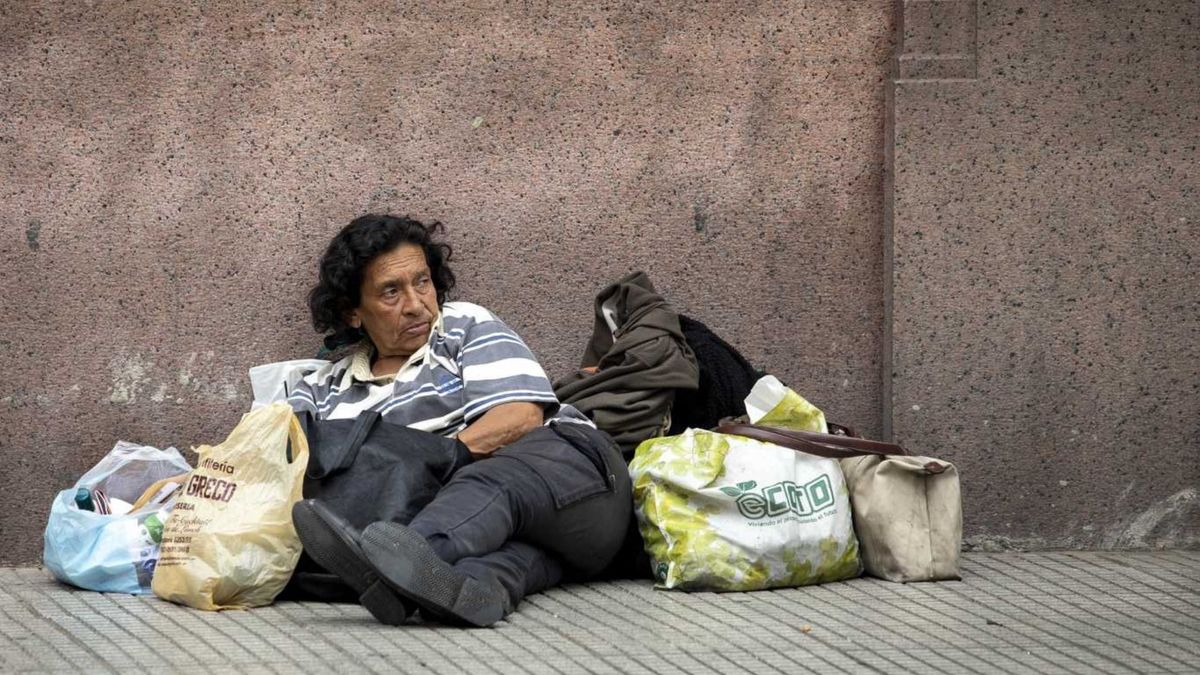As a percentage of the population, if we compare with only 4 years ago, poverty went from affecting 25.7% to 37.3%, an increase of 11.6 percentage points.
Aldo Abram, Executive Director of Libertad y Progreso mentioned that “One of the reasons that impoverishes Argentines it is the high inflationary tax with which governments finance excess public spending and that have a greater impact on those who have less. The other is that without structural reforms that resolve Argentina’s underlying problems, there is not enough investment. If an employee is made to work with an older and “wired” machine, he will produce less and less and, therefore, the purchasing power of his salary will be less and less; because nobody will pay him more than what he produces or the company would go bankrupt. That happens to the country when it is not invested.”
The economist Eugenio Marí stressed that “qthat more and more Argentines are below the poverty line is the consequence of insisting on an economic model that does not work. In addition, with each passing year and opportunities for progress not opening up, structural and child poverty rises, which jeopardizes the country’s future.”
“The program that the government agreed with the IMF does not help break this trend, basically because it does not provide medium-term incentives for investment and growth. Without this, it is impossible to think of more work and better wages, something essential to reduce poverty,” added Marí.
For his part, the economist Diego Piccardo maintained that “not only is the data worrying with poverty that continues to be very high, but also the fact that the government has a wrong diagnosis of the problem that Argentina has. As a consequence, economic policy only aggravates the current situation and postpones the implementation of structural reforms that the country needs.”
“Meanwhile, society continues to suffer from inflation that will comfortably exceed 50% this year, hurting mainly those with the lowest incomes, pushing them below the poverty line. The President’s erratic speech on the inflation issue does not give signs that a serious program is being undertaken to lower inflation,” added Piccardo.
Agustín Salvia, from the Argentine Catholic University (UCA), stressed that “beyond a rational transitional solution to the debt crisis and the destructive consequences of a default, there are no economic or political conditions for the improvements achieved to be part of of a sustainable process of monetary-fiscal stability, investment, multiplication of new companies, creation of private employment, improvements in productivity and real wages; in short, a process that provides clear rules that make it possible to increase the demand for employment and improve the quality of life in society.
He added: “but none of that is happening, so it is to be expected that after the wave of consumption and the recovery of employment, poverty will return to levels closer to 40%, a new equilibrium floor for a process that will continue to be stagflationary “.
Projections for 2022
According to the Argentine Political Economy Center (CEPA), almost at the end of the first quarter of 2022, it can be inferred that the indicators of poverty and indigence will present a stagnation/increase during the first semester of this year, depending on the policies that are applied. It is worth mentioning that the first quarter will show worse results given that not only is high inflation perceived, but it also coincides with “old” salaries and updates that have not yet been implemented.
The data available for the first quarter of 2022 show a significant increase in the CBA in February 2022, and stabilization in the CBT; a stagnation in the evolution of the RIPTE, the AUH and the minimum pension; and a recovery of the SMVM from April 2022, as in the case of social plans.
The evolution of food prices- reached very significant values: to the inertia and imported inflation that dragged on, the impact of the war in Eastern Europe was added, which generated a substantial increase in the international prices of food commodities and fuels. In addition to the latter, a scenario of oligopolistic speculation in the domestic economy that has recently been exacerbated. The average for January and February shows an increase in real terms compared to the previous semester. Although a slight decrease is perceived in the case of the CBT, the rate increases planned for March/April will have an effect on this indicator.
The agreement with the IMF limits the government’s ability to carry out countercyclical income policies to support the income of unregistered workers, such as complementary bonuses for households receiving AUH or a new IFE. Along the same lines, limits are set for energy and transport subsidies in a context of rising international prices. Indicates the agreement with the agency “discretionary increases in pension outlays should be avoided as they would undermine the fiscal targets and sustainability of the system”. However, the possibility of paying a pension bonus that could reach some 5 million people has come to light, which would help improve the situation in relation to poverty.
The 2019 Solidarity Law limits the decoupling capacity with respect to international prices by establishing a maximum percentage of withholdings.
Thus, the indicator could show a growing trend in the first quarter of 2022 and a decreasing trend in the second. To aspire to this, in the first place, prices must be stabilized at current values, and the joint ventures (which are closing as of April) help compensate for the loss of purchasing power in the first quarter. Likewise, the delivery of the extraordinary bonus from ANSES to retirees from the minimum, and, eventually, to recipients of AUH and other pensions, could strengthen the poverty reduction strategy. And, given the closeness between the value of the CBT and the median salary, the increase by salary decree could be another good tool to improve the situation.
Source: Ambito
David William is a talented author who has made a name for himself in the world of writing. He is a professional author who writes on a wide range of topics, from general interest to opinion news. David is currently working as a writer at 24 hours worlds where he brings his unique perspective and in-depth research to his articles, making them both informative and engaging.




